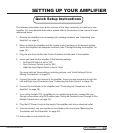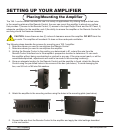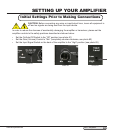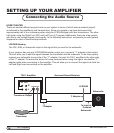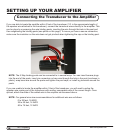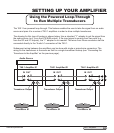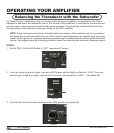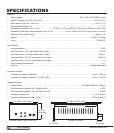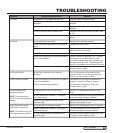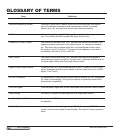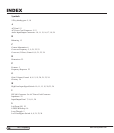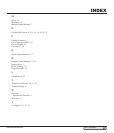
www.clarksynthesis.com
TA0.1 Amplier
24
GLOSSARY OF TERMS
Term Denition
Audio Input/Output Connectors Audio connectors on the amplier that receive or transmit the main signal.
Automatic Balancing System Included in some Home Theater Surround-Sound Receivers, this feature
uses microphones to measure room sound levels in order to properly
balance low, mid, and high level sound output from the receiver.
AWG Abbreviation for American Wire Gauge. Commonly used to designate wire
size. The smaller the AWG number, the larger the wire size.
Crossover (X-Over) Control The control on the face of the TA0.1 amplier that controls the range of low-
frequency (bass) sound sent to the output device, i.e. transducer, speaker,
etc. This dial is only functional when the Low Pass/Bypass Switch under
the control is set to “Low Pass.” The range of low-frequency sound that is
controlled by this dial is 40 Hz to 400 Hz.
Gain Control The control on the face of the TA0.1 amplier that controls the degree to
which the input signal is amplied. The gain level, combined with the level of
the input signal, determines the actual volume output.
High/Low Input Signal Switch A switch on the TA0.1 that allows the user to use 1 V RMS or 316 mV RMS
inputs. Examples include a home theater receiver (“High” Level) vs. an MP3
player (“Low” Level).
IEC-601 Connector An adaptable AC connector that allows users to connect IEC-601 compatible
AC cords to the amplier. This type of connector is especially benecial for
international compatibility.
LFE/SUB Signal A low-frequency signal that is often associated with subwoofer (bass) sound.
Loop-through The ability to connect multiple amplifers to a single audio source.
Low Pass/Bypass Switch A switch on the TA0.1 that enables and disables the Crossover function of
the amplier.
Multiple Signal Hookup Using multiple audio input signals, e.g., RF, LF, Center, and LFE/SUB
signals, as the source signal for the amplier. This type of hookup requires a
mixer.



